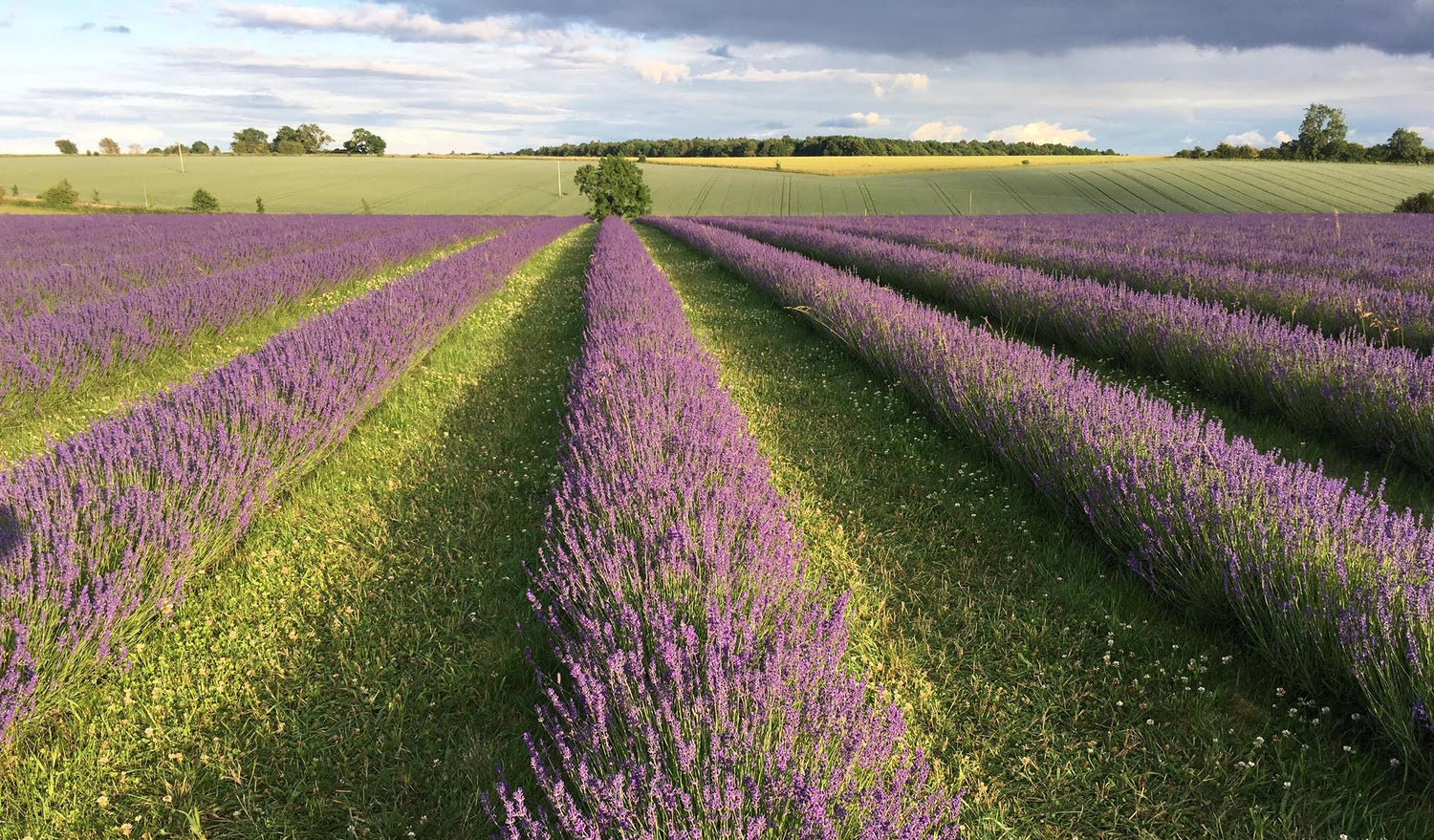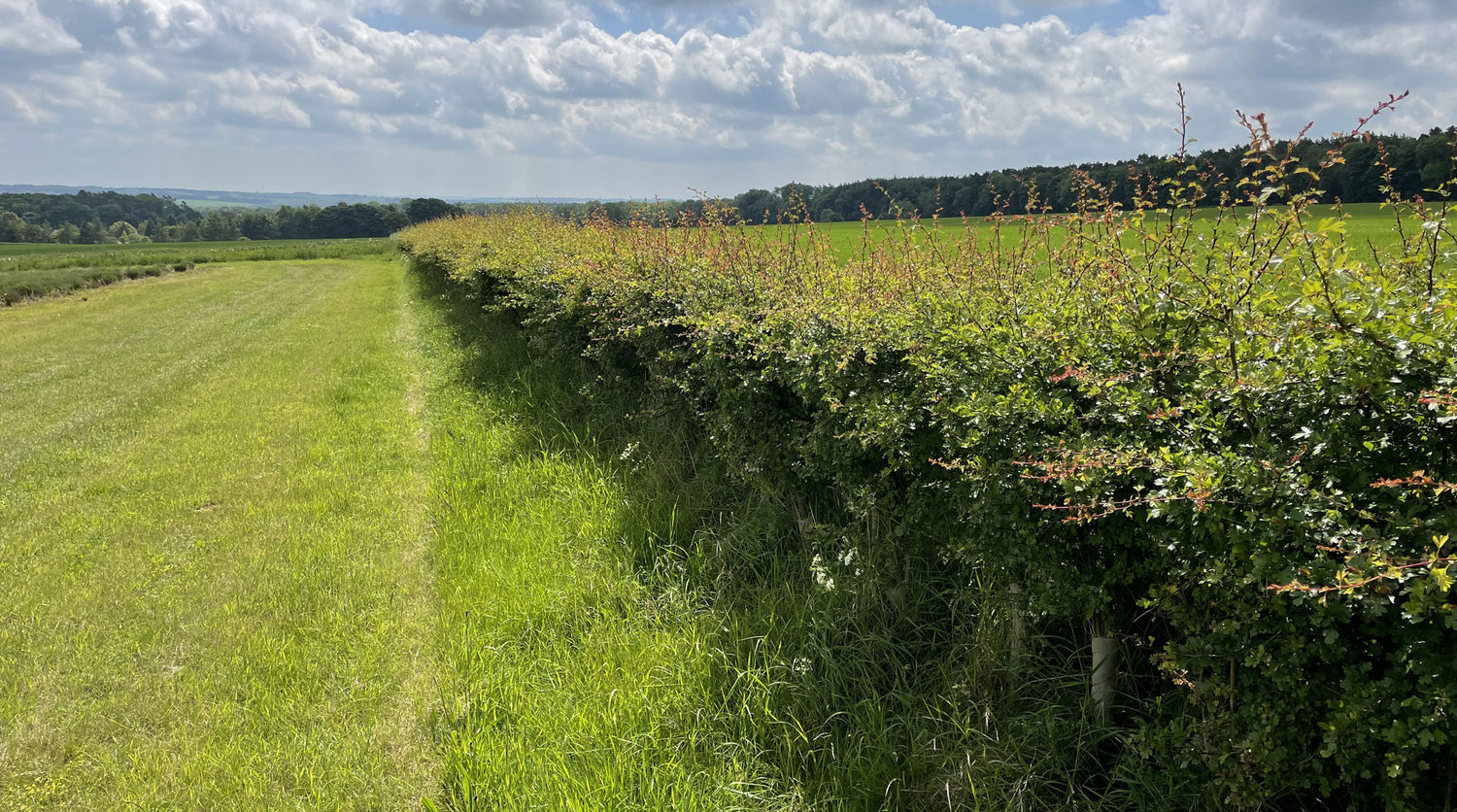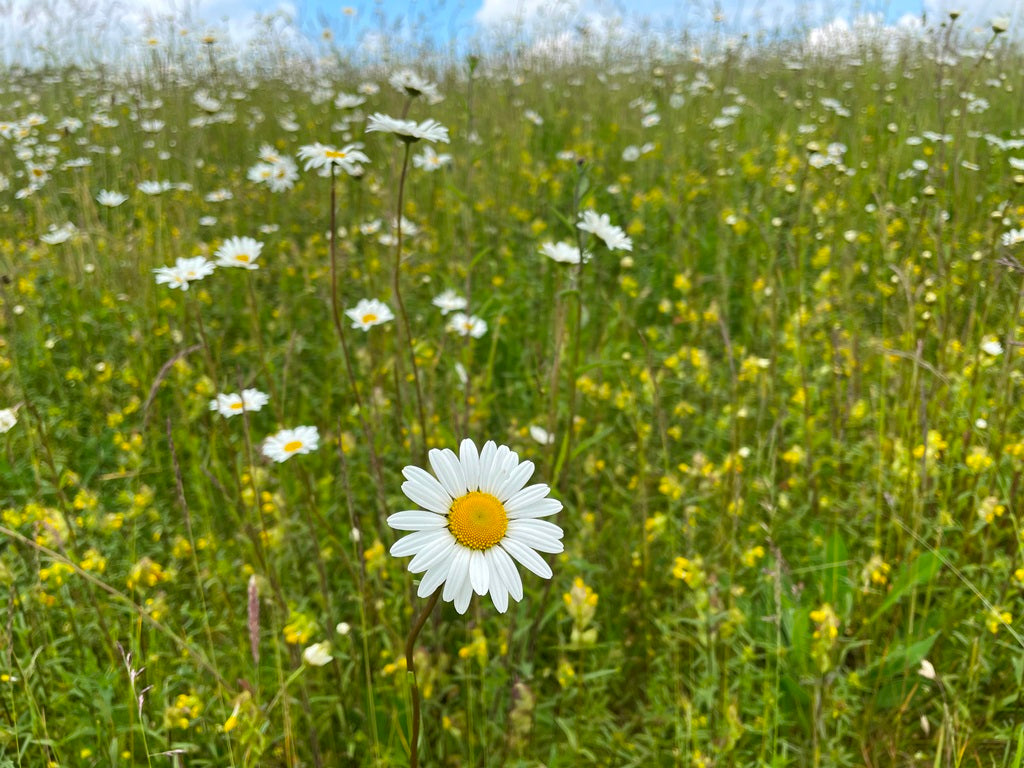
Our Environment
In harmony with our environment
We are trialling different ways of growing lavender. The most successful one is planting grass and clover between the rows of lavender this has many advantages. Firstly the clover is a legume which draws nitrogen from the air and adds it to the soil. This feeds the lavender plants naturally. The grass provides a ground cover to stop evaporation and also soil erosion.
Grass also has the natural advantage that it is capturing carbon from the air and storing it under the ground which contributes towards combatting the current problems we have with carbon in the atmosphere.

Hedges & Trees
Over the past 5 years alone we have planted 2200 trees and 1.5 miles of new hedges. Species are chosen that are native to this area but also give a range of habitats for birds and wildlife. Species include Beech, Maple, Wild Cherry and Hornbeam. Hedges are predominantly Hawthorn but also include Dogrose, Holly, Spindle and Blackthorn. These provide varied habitats for nesting and feeding birds as well as cover for mammals and insects.

Wildlife Margins
We leave various field corners and headlands around the farm uncropped to give wildlife a dedicated area to establish without being disturbed. These support a whole range of animals and insects from deer, hare and fieldmice, right down to butterflies, ladybirds and other invertebrates. We now have barnowls around the farm.

Zero Till & Cover Crops
Other crops grown on the farm include wheat, barley and beans. These are all planted without ploughing the soil as this releases carbon and harms microbes and organisms within the soil. Cover crops are also grown that will not be harvested, but absorb spare nutrients ready to be made available for the following crop